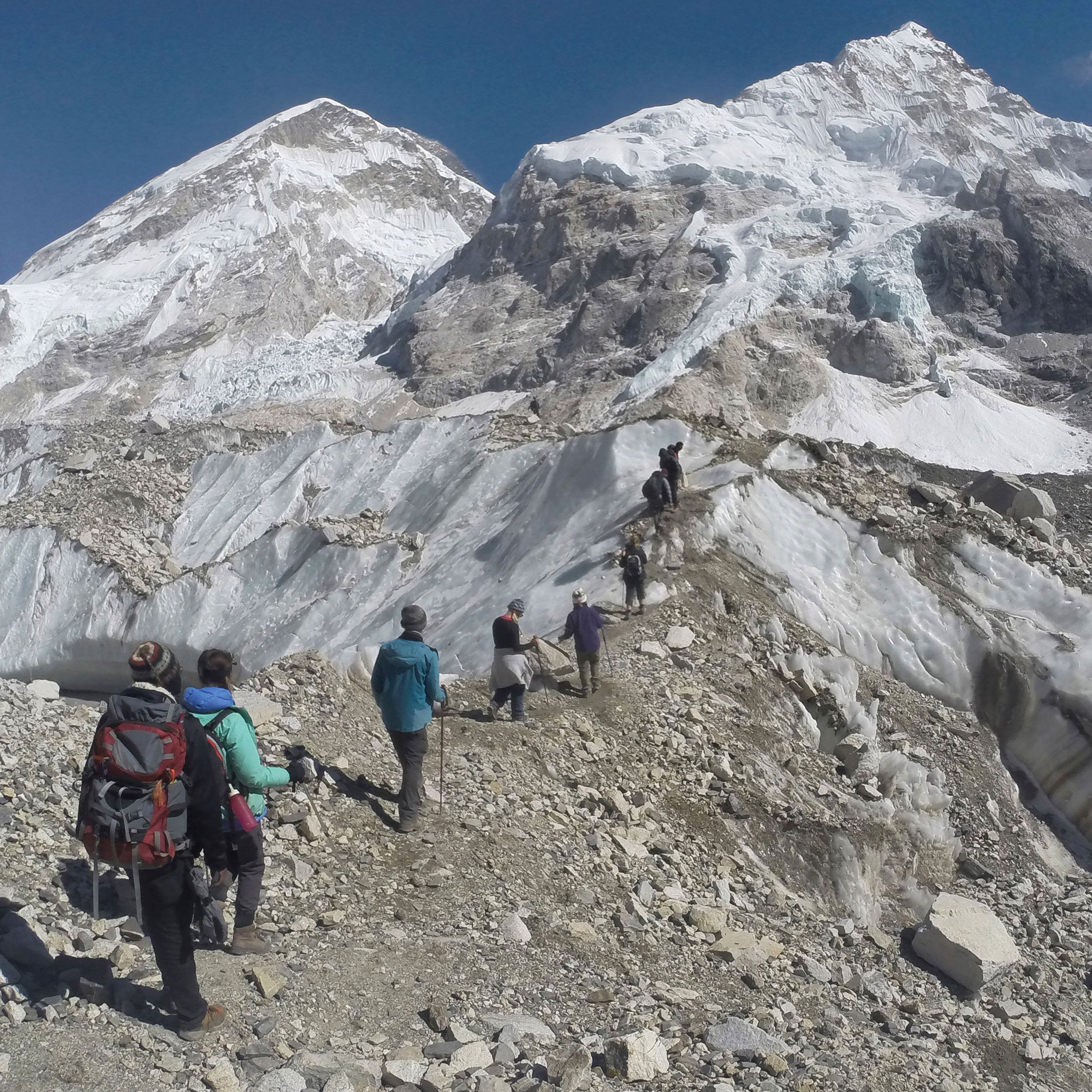A few weeks ago, a Beijing newspaper announced that the Chinese government was building a new mountaineering center and hotel near the north side of Everest. For foreign climbers, beginning with Sir Edmund Hillary, Everest’s Nepalese south side has always been the more popular destination because of its more direct, if more dangerous, Southeast Ridge route. But after the deadly avalanche in 2014 that killed 16 high altitude workers on the mountain, and the devastating Nepal earthquake of 2015, more climbers have been seriously looking to the north side of the mountain, which features an easy drive to base camp and a longer route up the mountain.
The mountaineering center will be located in Old Tingri, a town 40 miles northwest of Everest, and will house much of the infrastructure we currently associate with the French Alps: a heli base for rescue operations on the mountain, a mountaineering school for high altitude workers, and a fully stocked hotel. (The Beijing newspaper, China Daily, put the square footage of the building at 870,000 square feet, which sounds like a typo.) Add to the mountaineering center the modern paved road that was recently completed all the way to Everest’s Tibetan base camp and you can start to see the future of the mountain as the Chinese see it: a well-run tourism attraction capable of shuttling hundreds of thousands of attitude-sick travelers right to the foot of Everest in order to take in its grandeur with their own eyes.
You can start to see the future of the mountain as the Chinese see it: a well-run tourism attraction capable of shuttling hundreds of thousands of attitude-sick travelers right to the foot of Everest in order to take in its grandeur with their own eyes.
“The Chinese side of the Himalaya isn’t going to be like the wilderness in Alaska,” says Everest guide and outfitter Adrian Ballinger, a bullish supporter of the north side approach to climbing the mountain. “It’s going to be like the Alps, where you can take a train through the middle of the Eiger or ride a gondola halfway up Mont Blanc.”
It’s an aesthetic that runs counter to the mountaineering ethic, which favors a unencumbered and self-reliant style that’s not compatible with the large-scale guiding that’s the norm on Everest. But it will give the emerging Chinese middle class a way to become drive-by tourists like their American counterparts. Ballinger notes that it will also put Chinese mountaineering authorities closer to the mountain, which is one criticism that has recently been leveled against Nepal’s liaison officers: they govern from afar and rarely show up. As a result, disputes on Everest’s south side often require helicopter trips to and from Kathmandu for negotiations, as happened in the deadly 2014 avalanche.
Ballinger hopes that the Chinese won’t continue their construction projects further up the mountain, even if it’s easy to imagine. “What I hate to imagine is an oxygenated gondola going to the North Col one day,” he says. “That would take so much away.”
But of course, if you can imagine it, so can engineers.
For now, Everest’s two trade routes, the North Col route up from the Tibetan side, and the Southeast Ridge Route from Nepal, are functioning as sacrifices to commercialism so that other mountains can remain undeveloped. Beginning in the 1980s and accelerating in the mid-1990s, Everest became a commercial guiding destination for clients who could afford the $25,000-to-$90,000 price of a climb. But already the Everest model has spread to other of the world’s 14 8,000-meter peaks and even K2, which saw its first commercial ascents in 2015 despite being perhaps the most dangerous mountain on the planet.
The mountaineering center is scheduled to be completed by 2019, three years ahead of the 2022 Beijing Winter Olympics.

